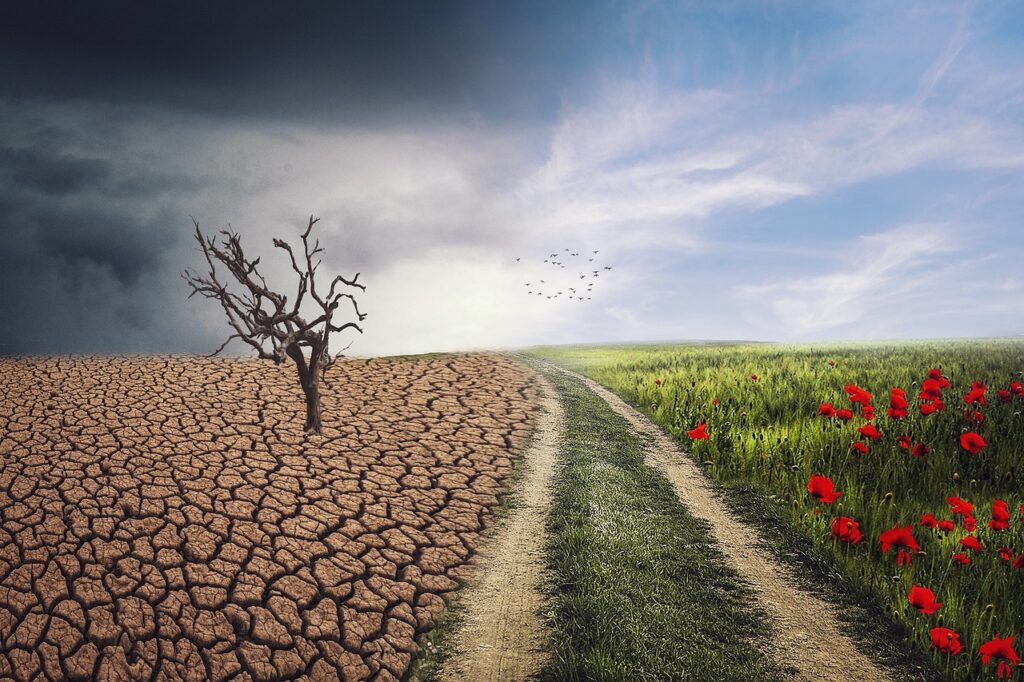The terms global warming and climate change have been used interchangeably in recent years. While they are linked, the two concepts are not identical. Global warming is a subcategory of climate change.
Global warming is the long-term warming of the Earth’s surface observed since the pre-industrial period (between 1850 and 1900) as a result of human activity, especially the use of fossil fuels, which increases heat-trapping greenhouse gas levels in the Earth’s atmosphere
Climate change refers to variations in global temperatures. However, it goes beyond that. It’s the global alteration in climatic conditions that includes wind patterns and precipitation.
Another difference between global warming and climate change is that when scientists or public officials speak of global warming these days, they almost always mean human-caused warming—warming caused by the rapid increase in carbon dioxide and other greenhouse gases emitted by people burning coal, oil, and gas.
Climate change describes the phenomenon of global warming, which refers to the continuous rise in the average global temperature and its resulting impact on Earth’s climate system. Additionally, climate change encompasses past historical changes in Earth’s long-term climate.
Aside from burning fossil fuels, humans often contribute to climate change by releasing aerosol pollution into the atmosphere, which reflects sunlight and cools the climate, or by changing the Earth’s surface, such as from carbon-storing forests to farming.
Global Warming Vs Climate Change: What’s the Relationship?

Global warming and climate change have a significant relationship. Global warming has resulted in an increase in the global average temperature. As a result, the normal mechanism of the water cycle has been disrupted, as glaciers have begun to melt and precipitation in the atmosphere has been impacted.
This, in turn, influences rainfall in various places, such as monsoon rainfall in India. So, it modifies the climatic conditions of various locations.
The rise in greenhouse gases in the atmosphere is another factor that proves the link between global warming and climate change. These greenhouse gases are in charge of trapping heat in the atmosphere and keeping the Earth’s surface warm. This is required for life to exist on Earth. However, the increase in greenhouse gases has resulted in an increase in heat-trapping. This has resulted in an overall increase in temperature, affecting many species on Earth.
Another facet of global warming and climate change is the El Nino effect. For example, El Nino happens every three to seven years. Warm water from the Western Pacific, notably the Indonesia and Philippines regions, moves east and causes an increase in ocean temperature in a region west of Peru when the exchange winds are favorable. This event causes significant changes in cloud formation, precipitation, and temperature, all of which contribute to climate change.
Global Warming Vs Climate Change: Implications for the Future

According to scientists, the current rate of climate change will continue for the next century, if not longer. The global warming effect determines the magnitude of these climate variations. The amount of greenhouse gases in the atmosphere that continue to trap solar heat will determine how much global warming affects climate change.
Global warming and climate change are intricately intertwined. The idea is that the more global warming there is, the more severe the effects of climate change will be seen globally.
Here’s what to expect:
- Temperatures are predicted to rise further as a result of the greenhouse effect. Because human activities have affected the natural range of temperature on Earth, stability will not be achieved anytime soon.
- Weather patterns have changed as a result of global warming and climate change. Weather patterns and seasons will continue to shift in the next years. Precipitation patterns have been altered as a result of global warming.
- Snowfall and rainfall patterns will become more variable in the future. People must be prepared for severe storms and snowfall seasons. It’s also anticipated that there would be chronic drought and strong heat waves.
As the earth’s temperature continues to rise, the intensity of the heat will injure plants, trees, and vegetation on the planet’s surface and produce more droughts. Temperatures will be greater in locations that experience summer, with significant heat waves. Global sea level is anticipated to rise by four feet in the next century as a result of global warming and climate change.
The Bottom Line
There is no denying that global warming and climate change are inextricably linked. Besides, both are caused by human activities and a reduction in the Earth’s forest cover. Humans have the responsibility, as superior to other animals, to protect the natural ingredients of the environment in order to make it easier for other species to exist in this world. The world has to scale up its efforts to drastically reduce global warming and climate change, or else more and more species will become extinct in the coming years.


